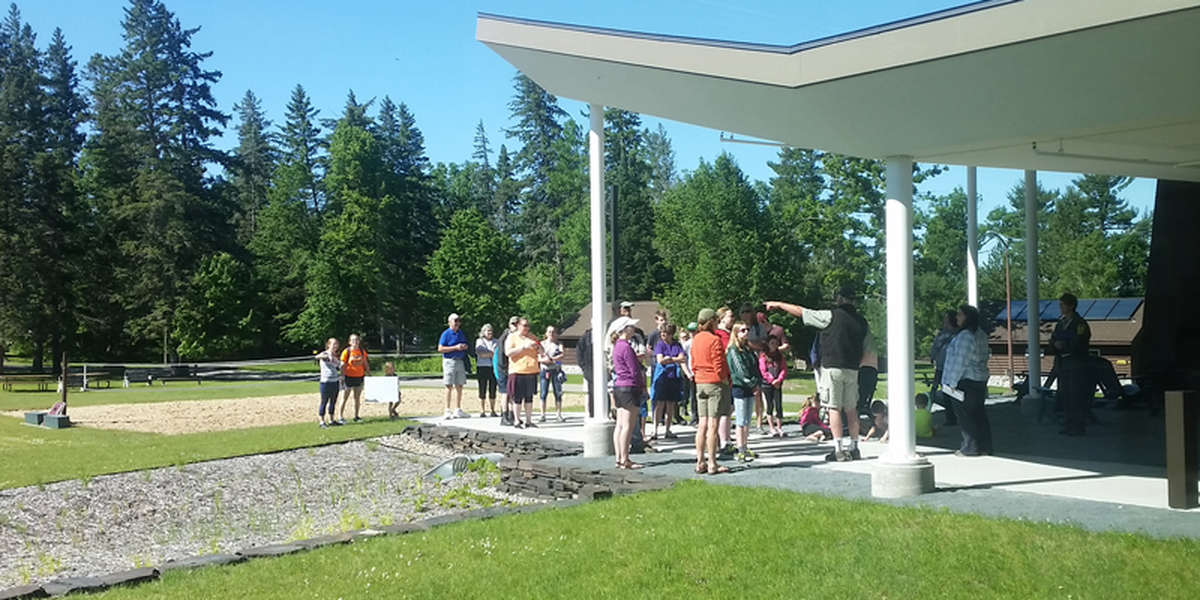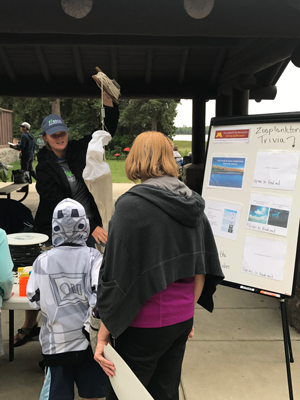
Many visitors to Itasca State Park make the trek to northwestern Minnesota to bike ride through towering pines, spot a deer or black bear on a walk near the lake or hop across the slick rocks at the iconic headwaters of the Mississippi River. But Lesley Knoll, station biologist at Itasca Biological Station and Laboratories, hopes the over-half-million park visitors who head to the park every year add some other activities to their to-do list.
“Many park visitors are nature enthusiasts and take a special interest in learning about how the research coming out of the station sheds light on Minnesota’s natural resources,” she says. “We want to share what we do.”

In 2016, Knoll started working with naturalists at the park to offer joint programming between the field station and state park. Starting with station tours, she and fellow biologists launched additional public outreach initiatives last year, including interpretive hikes and a display on the impact of last summer’s solar eclipse on aquatic zooplankton.
“There is a sense of mystery about the station to many park visitors, so we first offered tours,” Knoll says. “It is clear that people have an interest and are also curious to learn more. The last two years, our programs have been very well-attended especially considering their newness.”
The team at Itasca plans to expand on this programming in 2018, already scheduling station tours in June and August, interpretive hikes on the afterlife of trees and exploring Bear Paw Point, as well as setting up activities and information stations for Wet and Wild Mississippi River Day on August 9.
Knoll appreciates the opportunity to get in front of a broader audience and share the science behind the natural beauty in Itasca. While taking the lead on this endeavor, she also sees opportunities for further public engagement at the park.
“I would love to see faculty, post-docs, and graduate students with an interest in public engagement come up to lead programs,” she says. “I think scientists are appreciating more and more the role we can fill by sharing our science and also beginning a dialogue with our local communities.”
Both Knoll and Station Director Jonathan Schilling see this dialogue as a key element to their public outreach.
"The Itasca station is in a prime position to engage the public about science and scientists,” Schilling says. “We sorely need that interaction right now. It was part of my vision coming into my new job as director at the station, but Lesley was already two steps ahead of me -- I am so grateful for that."
-Lance Janssen